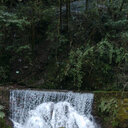Santamarine Inhibits NF-κB Activation and Induces Mitochondrial Apoptosis in A549 Lung Adenocarcinoma Cells via Oxidative Stress.
Kľúčové slová
Abstrakt
Santamarine (STM), a sesquiterpene lactone component of Magnolia grandiflora and Ambrosia confertiflora, has been shown to possess antimicrobial, antifungal, antibacterial, anti-inflammatory, and anticancer activities. However, no study has yet been conducted to investigate the molecular mechanism of STM-mediated anticancer activity. In the present study, we found that STM inhibits growth and induces apoptosis in A549 lung adenocarcinoma cells through induction of oxidative stress. STM induces oxidative stress by promoting reactive oxygen species (ROS) generation, depleting intracellular glutathione (GSH), and inhibiting thioredoxin reductase (TrxR) activity in a dose-dependent manner. Further mechanistic study demonstrated that STM induces apoptosis by modulation of Bax/Bcl-2 expressions, disruption of mitochondrial membrane potential, activation of caspase-3, and cleavage of PARP in a dose-dependent manner. Moreover, STM inhibited the constitutive and inducible translocation of NF-κBp65 into the nucleus. IKK-16 (I-κB kinase inhibitor) augmented the STM-induced apoptosis, indicating that STM induces apoptosis in A549 cells at least in part through NF-κB inhibition. Finally, STM-induced apoptosis and expressions of apoptosis regulators were effectively inhibited by thiol antioxidant N-acetyl-L-cysteine (NAC), indicating that STM exerts its anticancer effects mainly through oxidative stress. To the best of our knowledge, this is the first report providing evidence of anticancer activity and molecular mechanism of STM.


